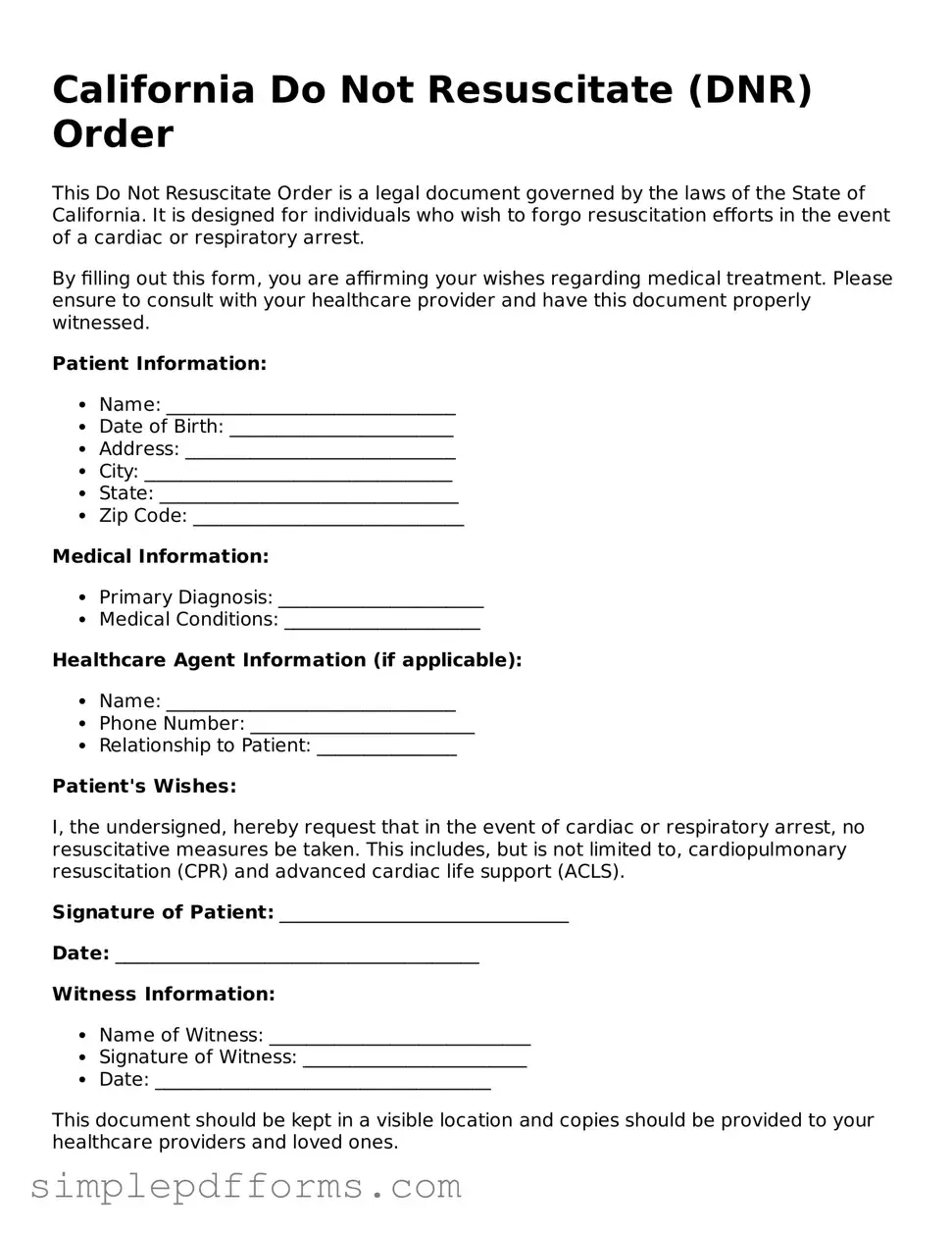Filling out a Do Not Resuscitate (DNR) Order form in California is a significant decision that requires careful consideration. However, many people make common mistakes that can lead to confusion or unintended consequences. Understanding these pitfalls can help ensure that your wishes are clearly communicated.
One frequent mistake is not discussing the decision with family members or loved ones. A DNR order can have profound implications, and it’s essential that those close to you understand your wishes. Failing to have this conversation can lead to misunderstandings and conflict during critical moments.
Another common error is not consulting with a healthcare provider before completing the form. Medical professionals can provide valuable insights into what a DNR order means for your care. They can help clarify how this decision aligns with your overall health goals and preferences.
Some individuals neglect to sign and date the form properly. A DNR order must be signed by the patient or their authorized representative to be valid. Without a signature, the document may not hold legal weight, rendering it ineffective when needed most.
Additionally, people often forget to provide copies of the DNR order to relevant parties. Simply filling out the form is not enough; it should be shared with healthcare providers, family members, and anyone involved in your care. This ensures that your wishes are known and respected across all settings.
Another mistake is using outdated forms. California law can change, and using an old version of the DNR order may lead to complications. Always ensure that you are using the most current form available to avoid any legal issues.
Some individuals may also overlook the importance of reviewing their DNR order periodically. Life circumstances can change, and so can your wishes regarding medical treatment. Regularly revisiting the form ensures that it still reflects your current desires.
Moreover, people sometimes fail to understand the difference between a DNR order and other advance directives. A DNR specifically addresses resuscitation efforts, while other directives may cover broader healthcare decisions. It’s crucial to know how these documents work together.
Another mistake is not considering the implications of a DNR order in different healthcare settings. A DNR may be honored in a hospital but not in other environments, such as at home or in a long-term care facility. Clarifying where and how your wishes apply is vital.
Finally, individuals may not realize that a DNR order can be revoked at any time. Life is unpredictable, and your preferences may change. Knowing that you have the right to alter or cancel your DNR order is essential for maintaining control over your healthcare decisions.
